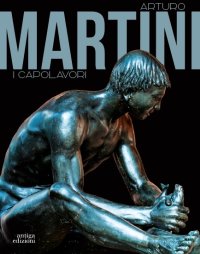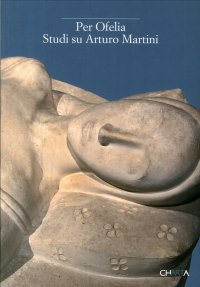Arturo Martini. I capolavori
Treviso, Museo “luigi Bailo”, March 31 - July 30, 2023.
Edited by Stringa Nico and Fabrizio Malachin.
Cornuda, 2023; paperback, pp. 278, col. ill., cm 23x29.
cover price: € 33.00
|
Books included in the offer:
Arturo Martini. I capolavori
Treviso, Museo “luigi Bailo”, March 31 - July 30, 2023.
Edited by Stringa Nico and Fabrizio Malachin.
Cornuda, 2023; paperback, pp. 278, col. ill., cm 23x29.
FREE (cover price: € 33.00)
Studi su Arturo Martini. Per Ofelia
Edited by Matteo Ceriana and Claudia Gian Ferrari.
Milano, Atti del Covegno, 19 maggio 2008.
Milano, 2009; paperback, pp. 136, 97 b/w ill., cm 17x24.
FREE (cover price: € 29.00)
Canova. L'invenzione della gloria. Disegni, dipinti e sculture.
Genova, Palazzo Reale, April 16 - July 24, 2016.
Edited by Giuliana Ericani and Franceasco Leone.
Roma, 2016; paperback, pp. 306, col. ill., col. plates, cm 23x30.
FREE (cover price: € 35.00)
Princeton and the Gothic Revival. 1870-1930
Seasonwein Johanna G.
Princeton University Press
Princeton, 2012; hardback, pp. 128, ill., cm 18x25.
ISBN: 0-691-15401-5 - EAN13: 9780691154015
Subject: Religious Architecture/Art
Period: 1800-1960 (XIX-XX) Modern Period
Languages: 
Weight: 1.12 kg
"Princeton and the Gothic Revival" investigates America's changing attitudes toward medieval art around the turn of the twentieth century through the lens of Princeton University and its role as a major patron of Gothic Revival art and architecture. Johanna Seasonwein charts a shift from eclecticism to a more unified, "authentic" approach to medieval art, and examines how the language of medieval forms was used to articulate a new model of American higher education in campus design and the classroom. The catalog for an exhibition at the Princeton University Art Museum, "Princeton and the Gothic Revival" breaks new ground by addressing why universities, and Princeton in particular, were so effective at bringing together what had been disparate interests in the Middle Ages. Revivalists and Medievalists were often at odds, yet at Princeton they used the language of the Middle Ages to create a new identity for the American university, one that was steeped in the traditions of Oxford and Cambridge but also embraced the model of the German research university. "Princeton and the Gothic Revival" provides an overview of Princeton's Romanesque and Gothic Revival architecture and examines the changing approach to the idea of the "Gothic" by looking at three Princeton buildings and their stained glass windows: the Marquand Chapel, Procter Hall at the Graduate College, and the University Chapel.











